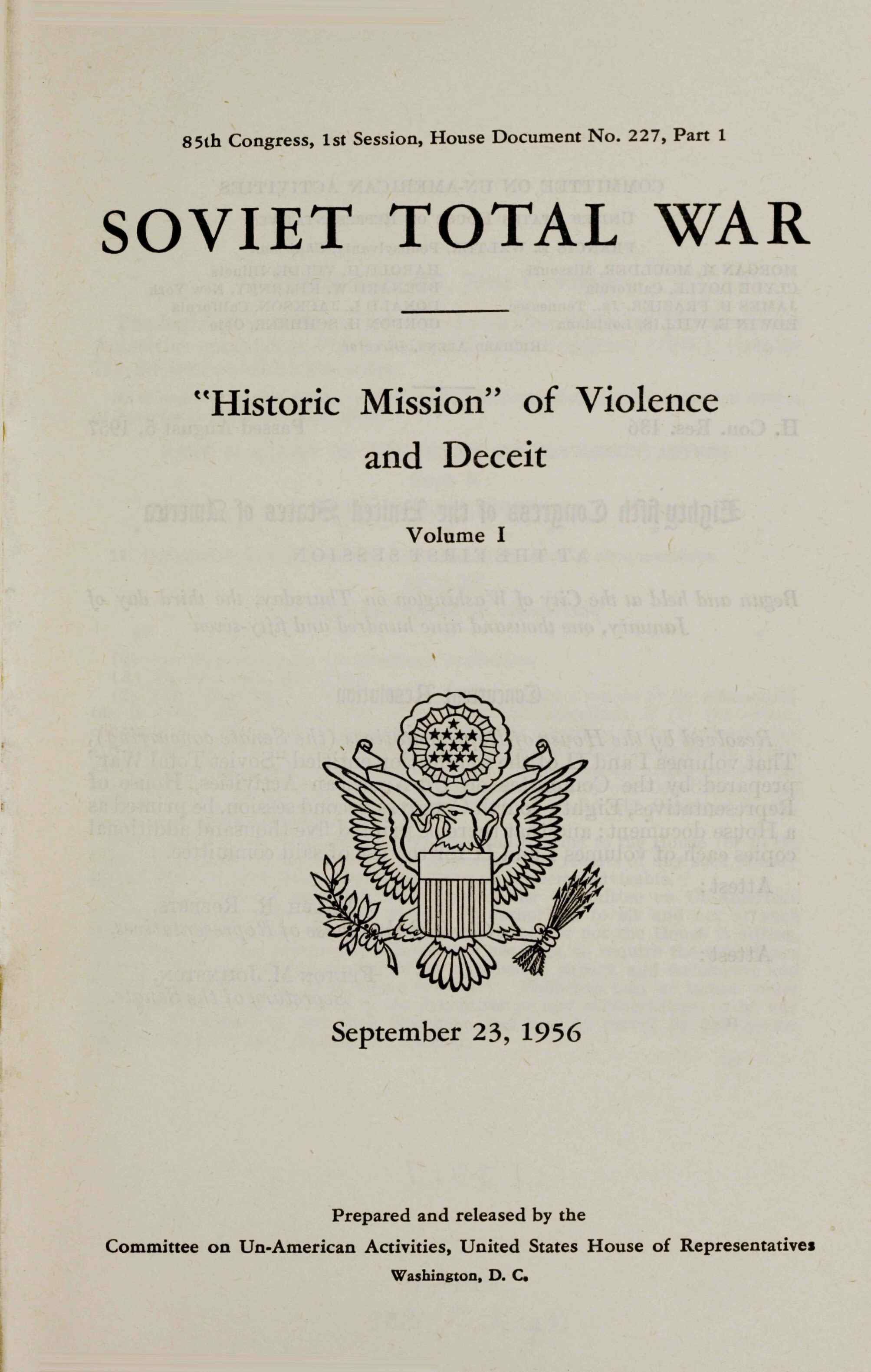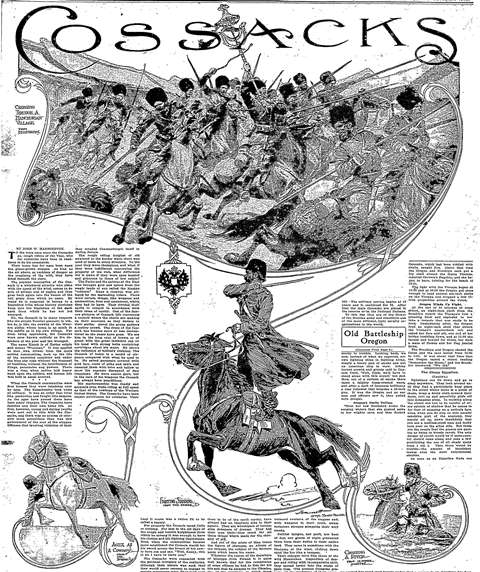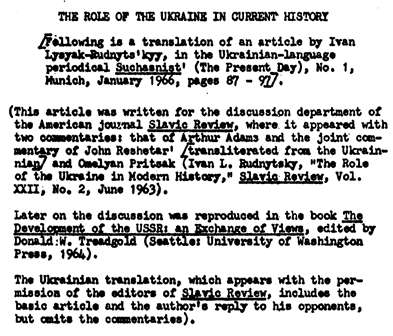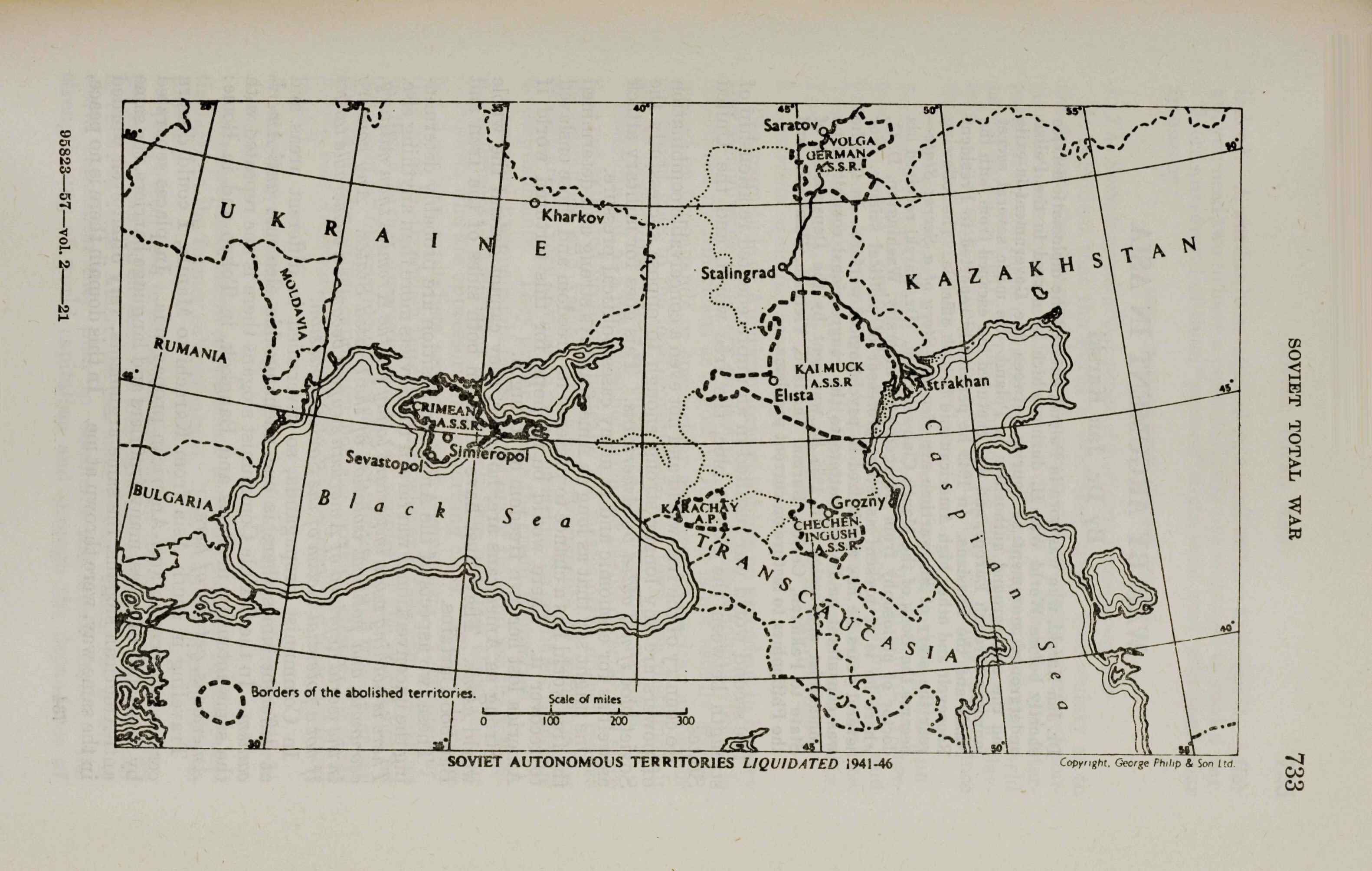Ukraine: Crossroads of Conquest
There is no lack of irony in Russia’s recent use of Cossack militia in the embattled Ukraine. In the U.S. Congressional Serial Set, 1817-1994, within the document titled “Soviet Total War – ‘Historic Mission’ of Violence and Deceit – Volume I” [85/1 12017 H.Doc 227, p. 723], we find “Russia’s two histories” described as a tension between “Russian state imperialism” and “lawless bands of fugitive peasants” which resisted czarist control even as their conquests consolidated the territories that would become the Soviet Union.

In their latest incarnation, however, it appears that the Cossack wolves have been domesticated, culminating in their revival as the Russian state paramilitary force they are today. Clothed as much in the romance of conquest as in their distinctive uniforms, the former renegades now serve as the vanguard of Russian nationalist aspirations in the western reaches of the former Soviet Union.

If the Cossacks’ loyalties are historically amorphous, the boundaries they seek to maintain are almost equally so.
In Article 2, Paragraph 2, of the Treaty of Peace between the Ukraine and the Central Powers (1918), the frontier of the Ukrainian People’s Republic was to be delineated “…in accordance with ethnographic conditions and the will of the inhabitants after determination of a mixed commission” [U.S. Congressional Serial Set, 1817-1994, 65/3 7470 H.Doc 1868 part 2, vol. 2, p. 666].
It’s clear from the ongoing conflict that the Ukrainian will towards self-determination is divided, but what can we discover of their ethnic relations?
Writing in 1966 from Philadelphia, émigré scholar Ivan Lysiak Rudnytsky describes the early history of Ukraine in this way:
In the middle of the 17th century the Ukraine rose against the Polish rule, and thus arose a new political organism—the Cossack state. Still, before the second half of the 18th century the Russian Empire succeeded in destroying the autonomy of the Cossack Ukraine. A new cycle of upheavals began in the 19th century. This new movement of national rebirth was completed by the 1917 revolution, when an independent Ukrainian state emerged, which, however, was under the strict control of communist Russia. [The Role of the Ukraine in Current History, Joint Publications Research Service, 1957-1995, Report No. 34910, p. 2]
The writer goes on to ground Ukrainian nationalism on that same Cossack militant tradition which is deployed to oppose it today. He continues, "Czarist Russia possessed some true colonies, such as the Trans-Caucasus and Turkestan, but the Ukraine can scarcely be included among them. The authorities regarded the Ukraine rather as belonging to the core of basic provinces of European Russia.” [pages 7-8] And, “Ukraine up to the 18th century (that is, while it was under Russian rule) was more closely associated with Western Europe—if only through a thin line, thanks to the Tartars—and moved hand-in-hand with Western Europe in the social and cultural process.” [page 11]

In the conclusion of his two-part article [Joint Publications Research Service, 1957-1995, Report No. 35085], Rudnytsky explores the geopolitical and cultural divisions of the territory and posits the Dnepr River as dividing the ethnic allegiances of the region: the Left Bank (east of the Dnepr) corresponds to the former autonomous Cossack state and aligned with Muscovy, whereas “the Right Bank was politically and administratively joined with Poland.” [page 3] But just as a river is defined by each of its banks, the inherent conflict between Polish and Russian ethnic ties “reinforced the Ukrainian consciousness of being a nation distinct from both Poland and Russia.” [page 4]
Despite his perspective from the depths of the Cold War, the author sounds remarkably contemporary when he states: “Among the problems which the Ukrainian people had to face in the 19th century, none was more pressing than the choice between assimilation into the All-Russian nation and maintaining their own national individuality.” [page 8] In its implications for Ukrainian autonomy, the political and cultural resonance of the recent successful annexation of Crimea by a resurgent Russia can hardly be overstated.
Quoting the German traveler Johann Georg Kohl writing on Ukraine in the 1830s, we read these prescient words:
If ever there comes a day when the colossal Russian Empire falls to pieces, there can be no doubt that the Little Russians will remain intact. They have their own language, their own historical recollections; they have rarely mixed with their Muscovite rulers; and today they already number ten million souls. [page 11]

For more information about the U.S. Congressional Serial Set, 1817-1994, and/or Joint Publications Research Service (JPRS) Reports, 1957-1995, please contact readexmarketing@readex.com.



